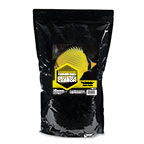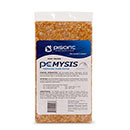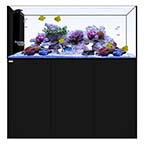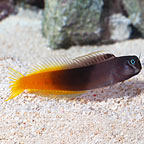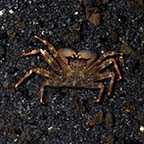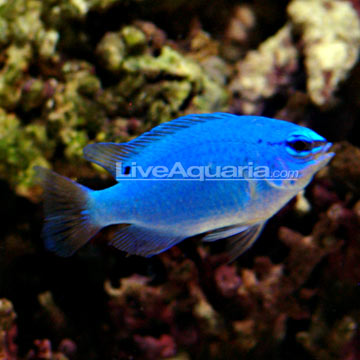
 SAVE up to 32%!
SAVE up to 32%!Additional locales and sizes may be available!
Additional locales and sizes may be available! Email me when availableQuick Stats
What do these Quick Stats mean? Click here for more information
What do these Quick Stats mean? Click here for more information
Overview
Native to reefs across the Indo-Pacific, Chrysiptera cyanea is usually busy defending a small territory. Interestingly, the Blue Damselfish has the ability to hide in a hole or crevice and darken to an almost black color. This usually happens when it is threatened. After the perceived threat is gone, the Blue Damselfish will return to its electric blue color in a matter of seconds.
The Blue Damselfish is somewhat aggressive, so its housing should be large enough to easily accommodate multiple specimens. It is a good fish for beginners and makes an ideal companion fish for saltwater aquariums of over 30 gallons. The Blue Damselfish is also a great choice for reef aquariums with invertebrates. As the Blue Damselfish matures, it may demonstrate pronounced territorial behavior towards future additions to the aquarium. If keeping the Blue Damselfish with other damselfish, provide multiple hiding places to break up territories and decrease aggression
The diet of the Blue Damselfish should consist of flaked and frozen foods, and herbivore preparations.
Approximate Purchase Size: 1" to 2"




